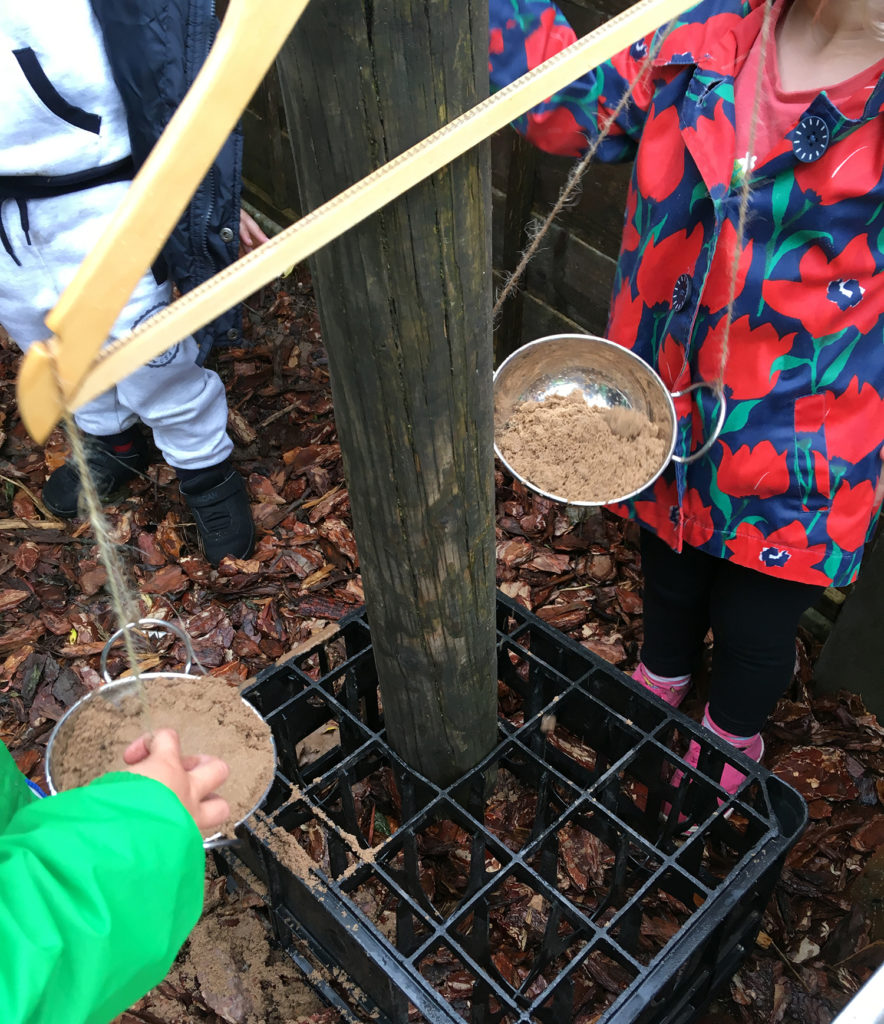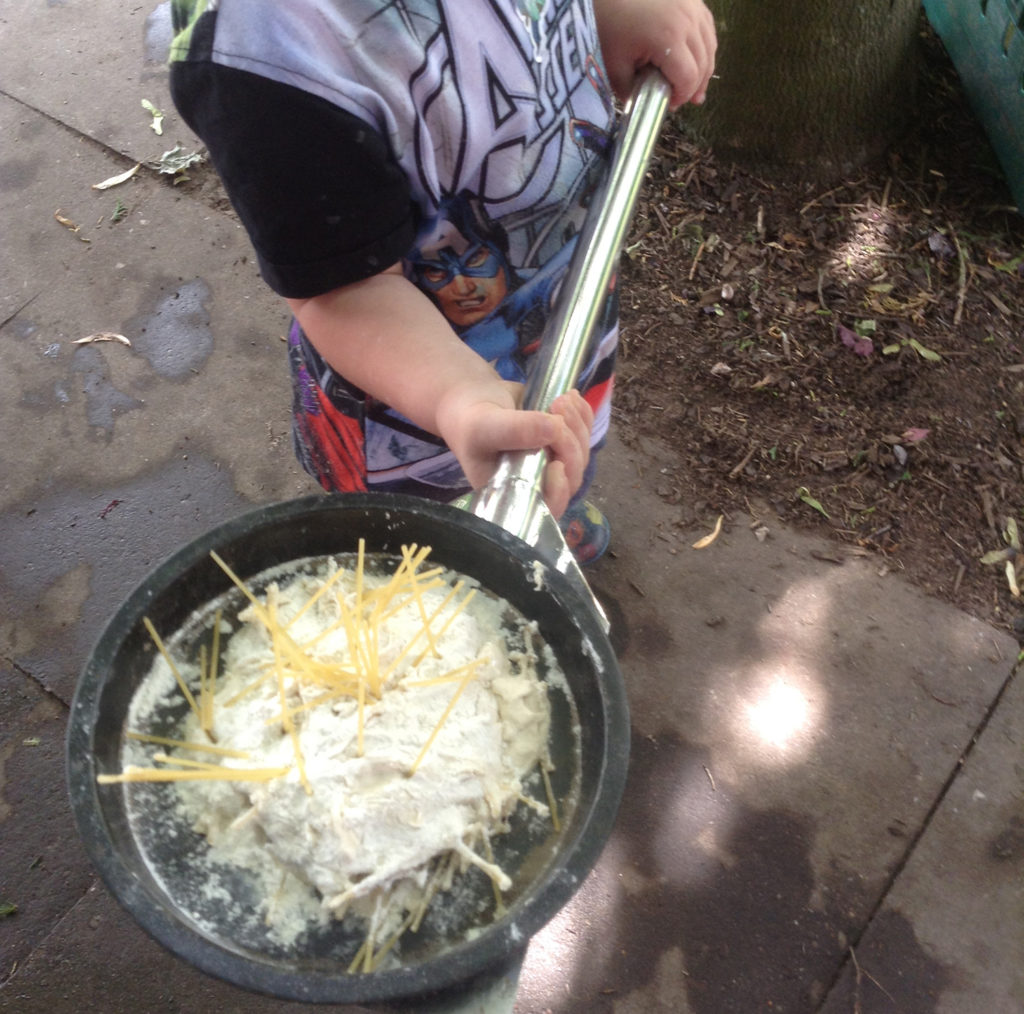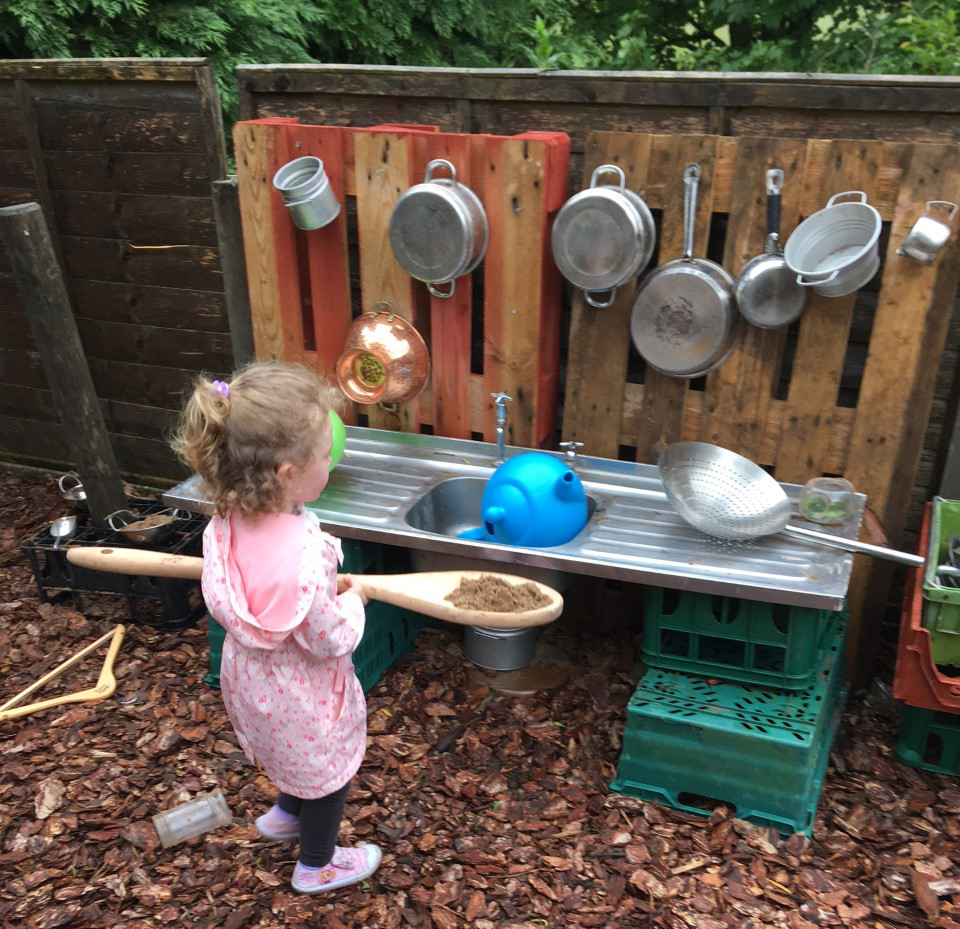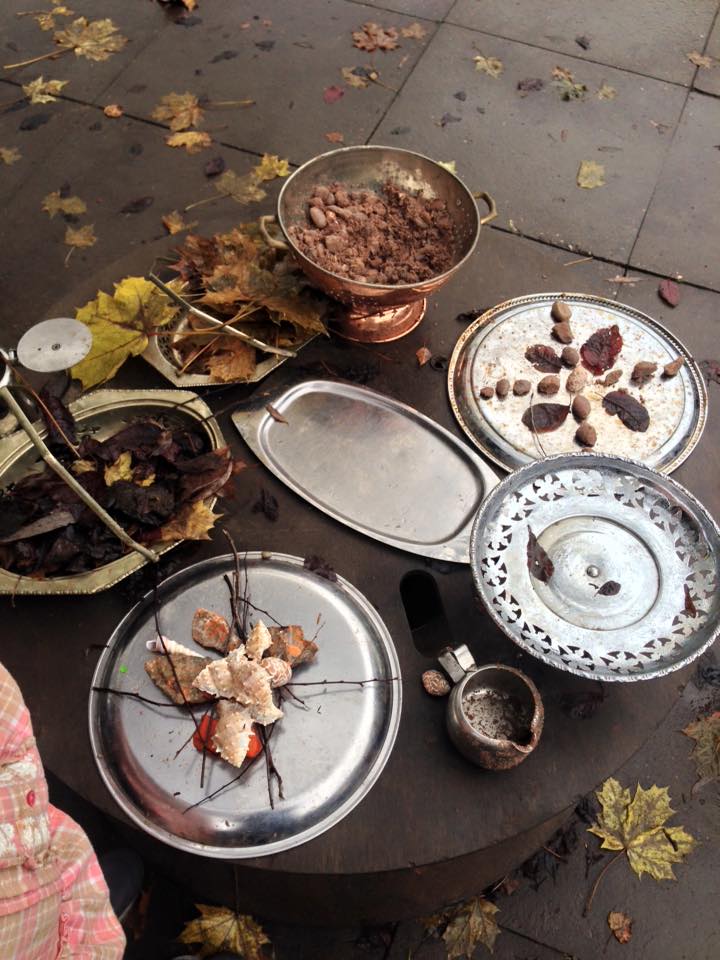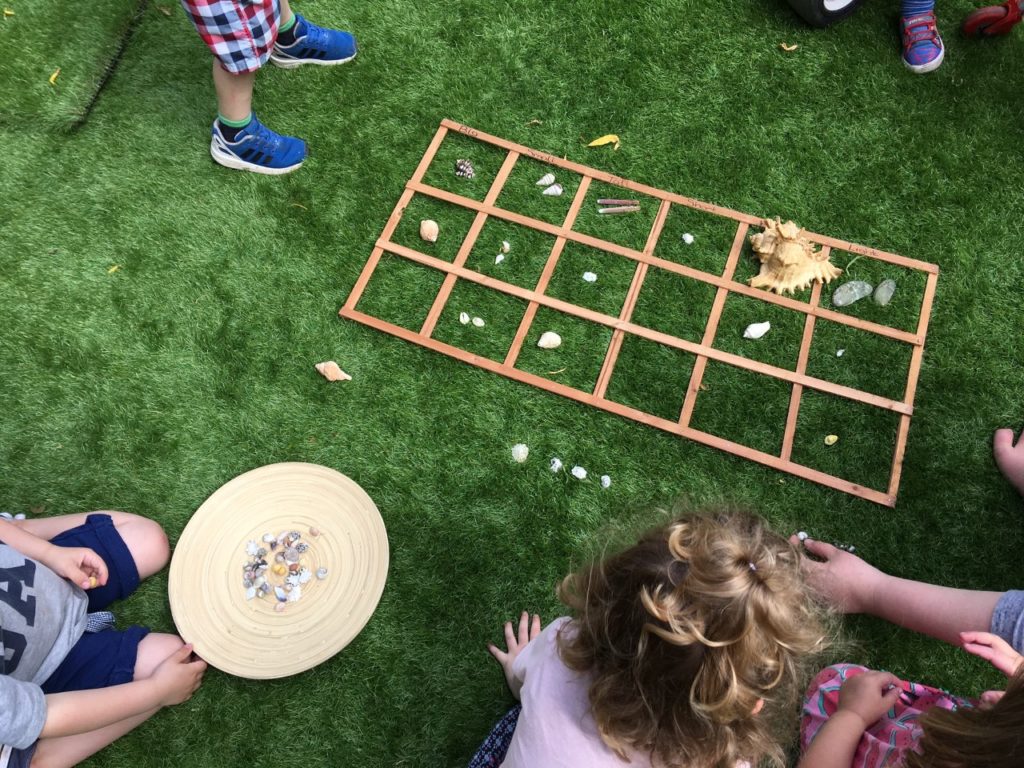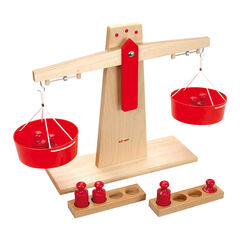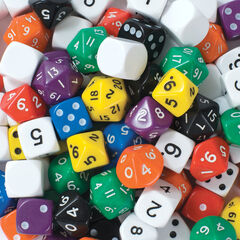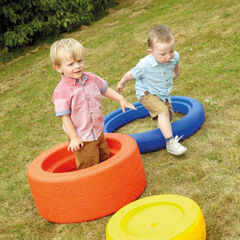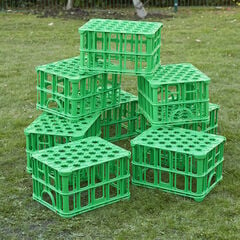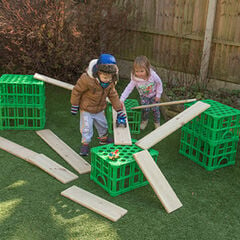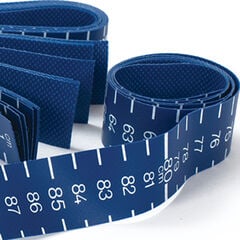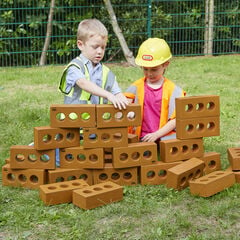The Mud Kitchen
There are a wealth of opportunities to add maths to your mud kitchen or café. For young children filling and emptying is all they need to learn the foundations for shape, space and measure; be sure to provide lots of containers in varying sizes alongside utensils. To further extend this, add measuring jugs and measuring cups.
You should consider adding scales, here I have made my own balance scale using a hanger and bowls, the children love taking turns to make their side heavier. However, with adult support you can count how many pine cones weigh the same as a pebble or find out if a cup of water weighs more than a cup of sand.
Add dice to your mud kitchen to decide how many leaves, sticks and stones need to go into your mud pie; this will develop quantity matching and counting skills. Remember to provide dotted dice and numbered dice to ensure children have the correct tools for their ability.
Recipes are another great way to add maths to the mud kitchen, provide simple recipes to allow children to learn about sequence, you can then extend this by providing more detailed recipes that require counting and measuring.
Finally, create a herb garden with the children to use alongside the mud kitchen. You can add a watering chart whereby children can write the date and time that they watered the herbs, plus, a growth chart whereby children can measure the growth over time.
Large Construction Play
Risky play is really important for young children’s development and large scale construction is a great way to provide an element of risk alongside maths. Providing a wealth of large resources including tyres, crates and planks of wood will allow children to create dens and obstacle courses, which require lots of mathematical thinking and problem solving. Children will need to think about how the items fit together whilst negotiating the space they have available. You can add tape measures and spirit levels to the activity to allow further mathematical investigation.
Once children have created an obstacle course you can encourage them to time each other by counting. To further extend this, add stop watches for the children to time each other; you can then talk about who was the fastest, who was the slowest and think about ordering time.
Natural Art
Creating art using the natural materials around you can lead to lots of mathematical language. Again, children will negotiate space and how items fit together but they will also explore pattern and quantities.
You can provide children with a base to work on, I have previously used wooden placemats and tiles, or you can simply allow them to create a large scale piece by marking out a section of grass. Talking to the children about what they are creating and if they have the right resources for it requires them to think about the shapes and sizes of items. You can introduce children to new words by describing items in a new way, for example, if a child says they have a “big piece” you can reply that they have a large/gigantic/humongous piece; this will extend their mathematical vocabulary.
Making patterns is also great, try making mandalas with the children to introduce the concept of pattern and symmetry. You can, again, collect natural resources for this and create individual mandalas or a large scale mandala.
Loose Parts
There are a wealth of loose parts at your fingertips when outdoors so be sure to use these to your advantage. Add simple resources to go alongside what’s already available to maximise mathematical development.
- Add numbered plant pots – children can collect items in them.
- Add a mathematical language grid – simply write words onto a trellis, children can collect items and put them in the correct section.
- Add pattern planks – simply draw different sized circles onto a plank of wood then let the children find items that fit into each circle.
- Add shape baskets – children can collect shapes in the environment.
- Measure using loose parts – e.g. how many sticks tall is the fence?
With thanks to Laura England – Little Miss Early Years – an early years teacher, enthusiast and blogger for this wonderful insight into loose part play.
Learning to play the natural way – the benefits of natural resources




